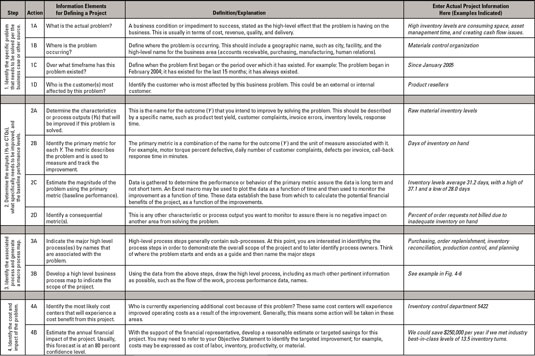When defining a project, you get into the nuts and bolts of Six Sigma. Doing this step right is well worth your time because 50 percent of your project’s success depends on how well it’s defined!
Different people can be part of defining a potential project, including the following:
-
Champions
-
Belts
-
Process leaders
-
Functional managers or process owners
Note: Any employee can suggest a Six Sigma improvement project, but have one of the people in this list consider and sponsor the project.
The most common mistakes people make in defining a potential project are
-
Making the scope too broad (solving world hunger or boiling the ocean). Symptoms include considering too many Ys (outputs) for improvement, multiple goals, numerous process owners, and multiple departments.
-
Picking a problem that’s too easy to solve with a Six Sigma project.
-
Selecting a problem for which the solution is known or for which a specific solution is mandated.
-
Defining a “just do it” solution, where no formal project and problem analysis is required.
-
Trying to make a problem out of a management issue.
To ensure that a project is well defined, go through a specified sequence of events. Generally, you can expect to perform the following eight specific steps in this process:
-
Determine the Y — what specifically needs to be improved.
-
Identify the associated processes and their physical locations.
-
Determine the baseline performance for each Y chosen.
-
Identify the cost and impact of the problem.
-
Write the problem statement.
-
Write the objective statement.
-
Identify and recruit candidates for the project team.
-
Obtain approvals and launch.
These steps are a combination of gathering data and organizing that data into a well-articulated project. Fill out a worksheet like this one to organize the data into a well-defined project.


